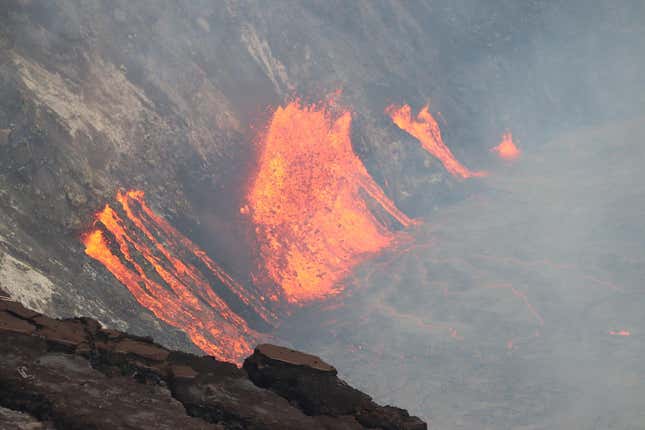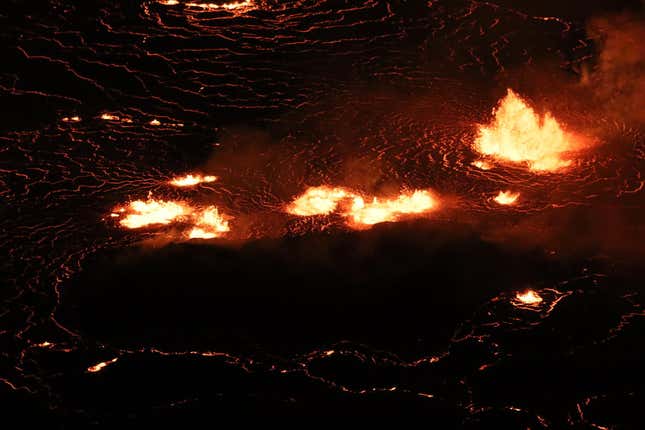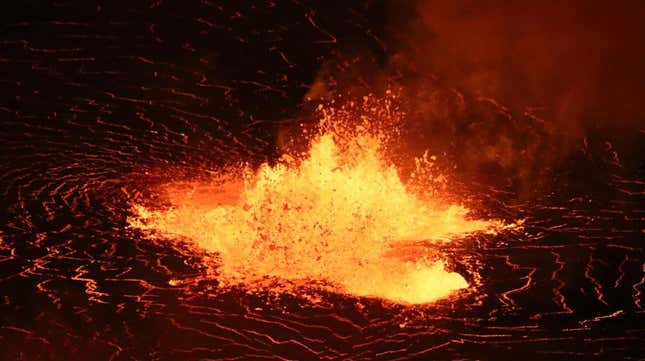The Canary Islands have a new partner in volcanic-erupting crime. On Wednesday afternoon local time, Hawaii’s Kīlauea volcano began to spew lava.
The formerly empty Halemaʻumaʻu Crater filled with lava, with molten rock gushing up in a spectacular fashion. The gurgling, roiling mess of lava continued into the evening as webcams and U.S. Geological Survey and National Park Service scientists captured striking images of Earth spilling its guts.
As of now, the eruption is confined to the crater and poses no immediate threat to those living in the shadow of Kīlauea, meaning we can mostly gawk at the stunning images. That said, the USGS has issued a red alert warning, and the area near the eruption is closed due to hazards in the vicinity.



